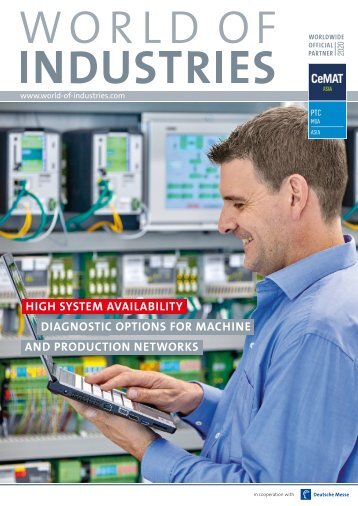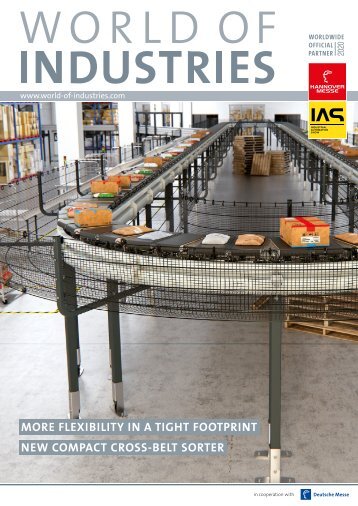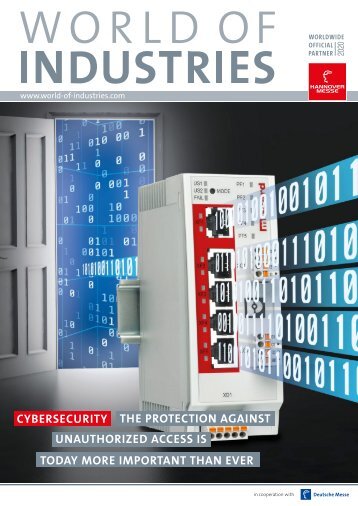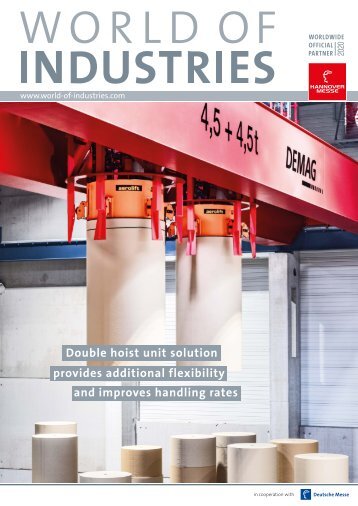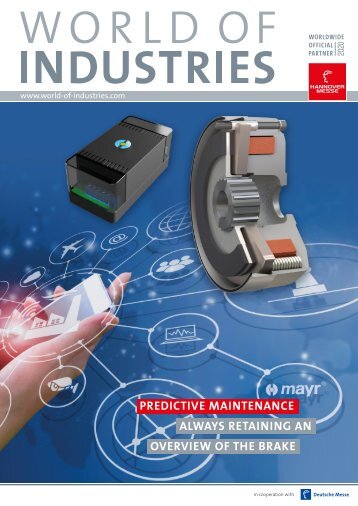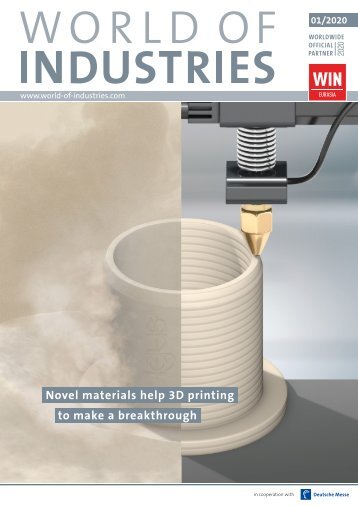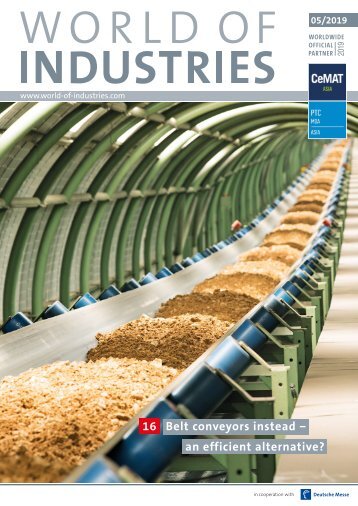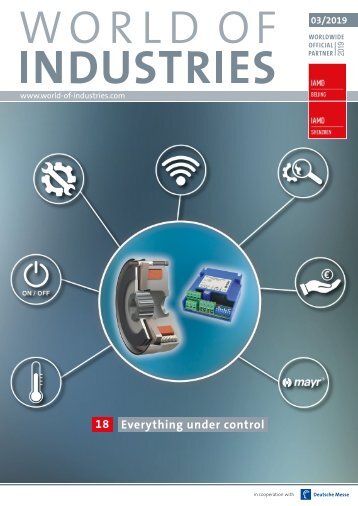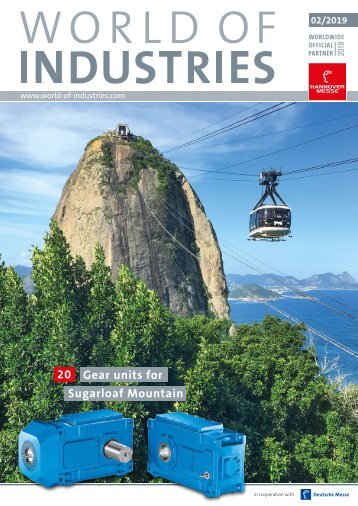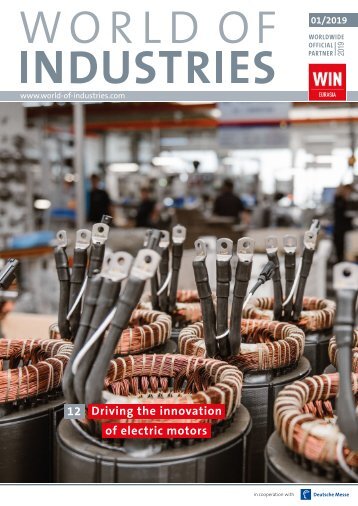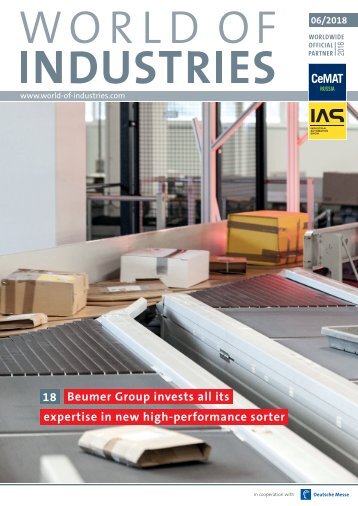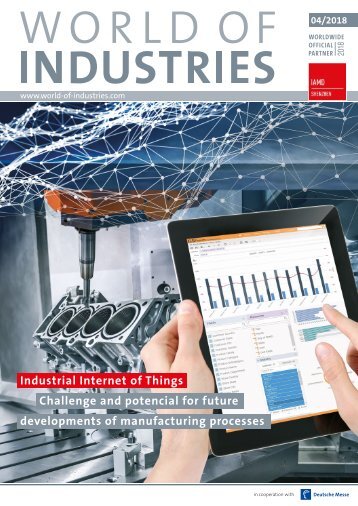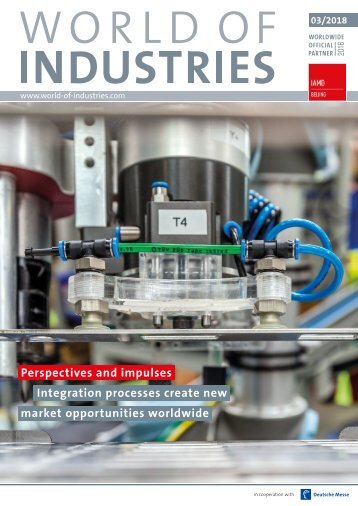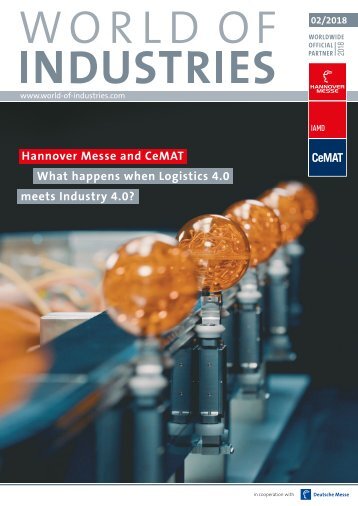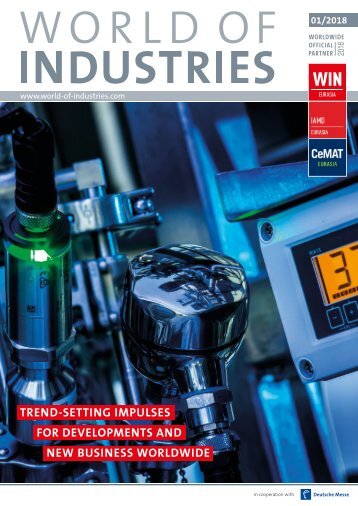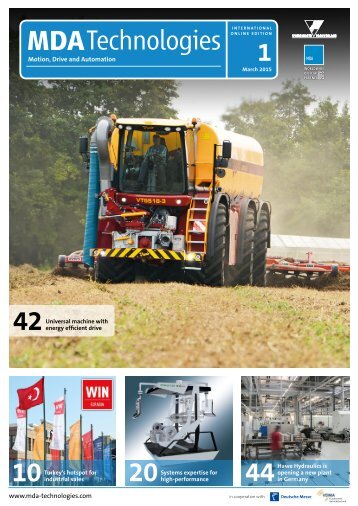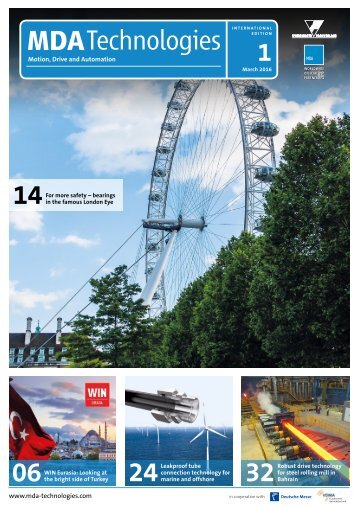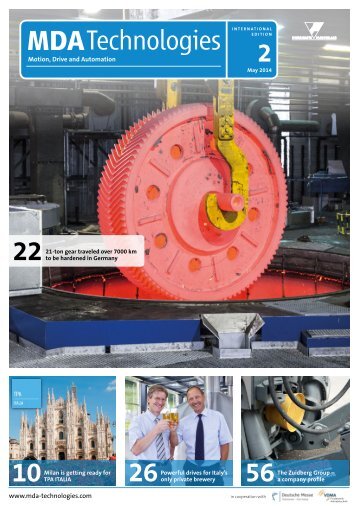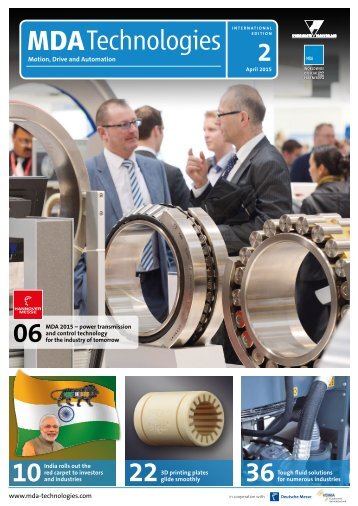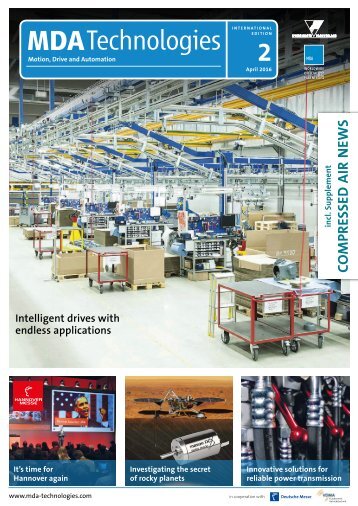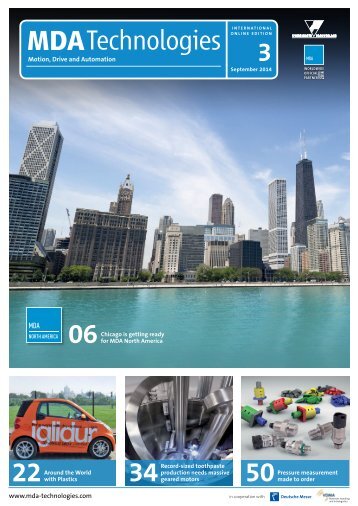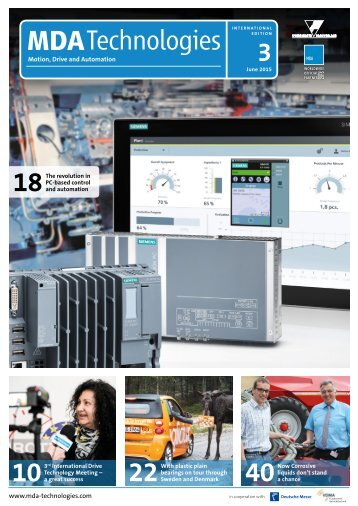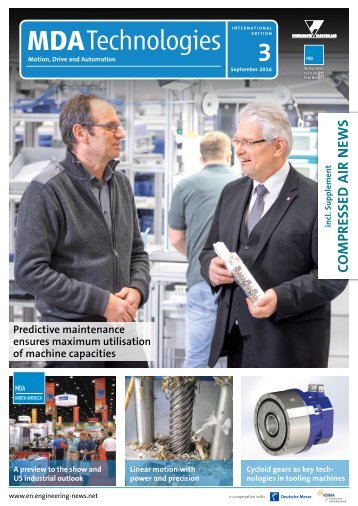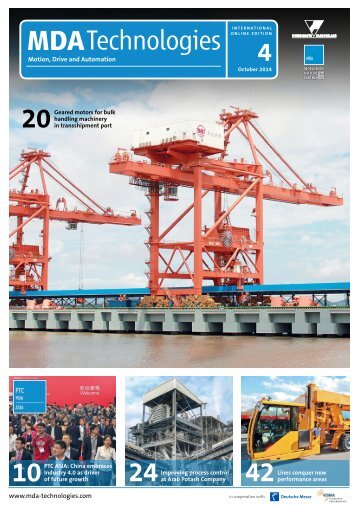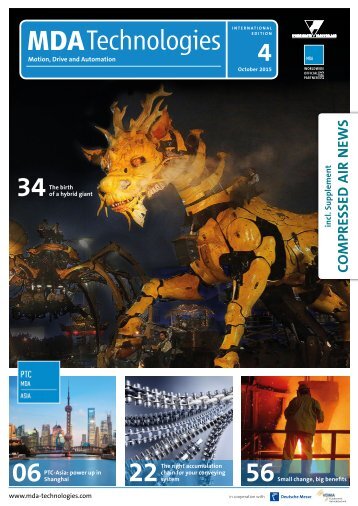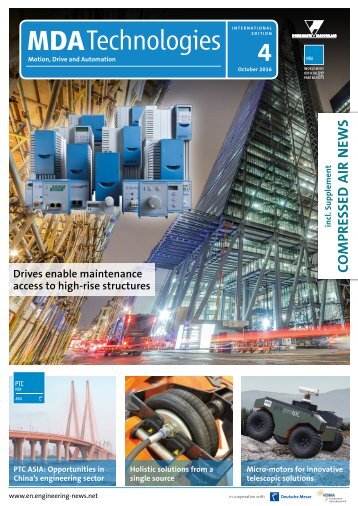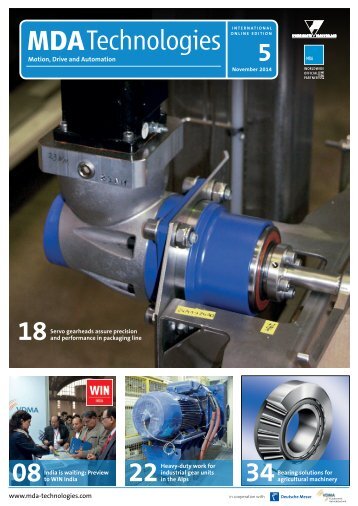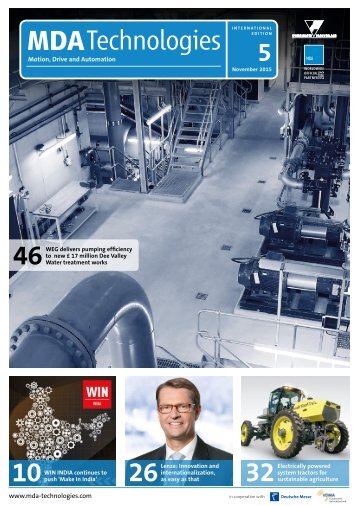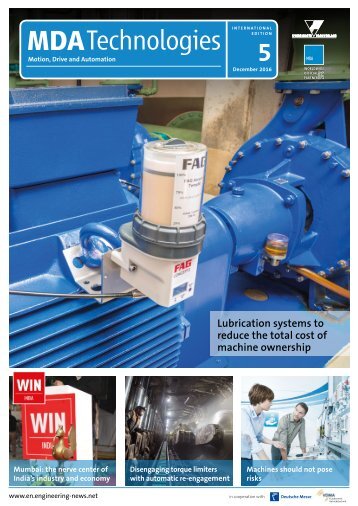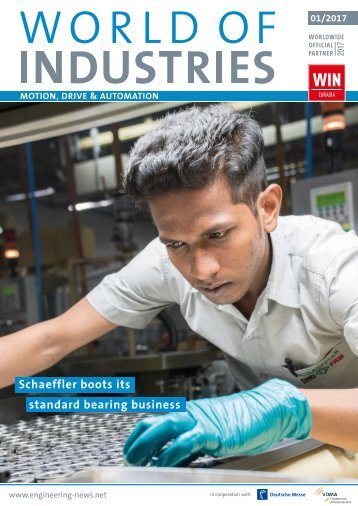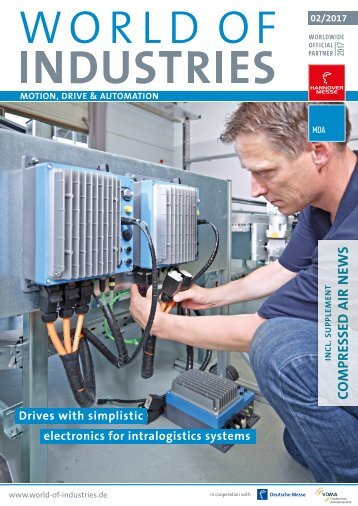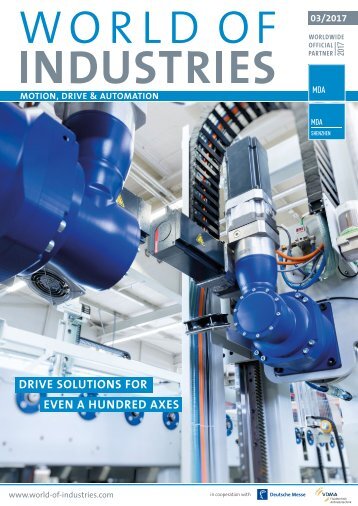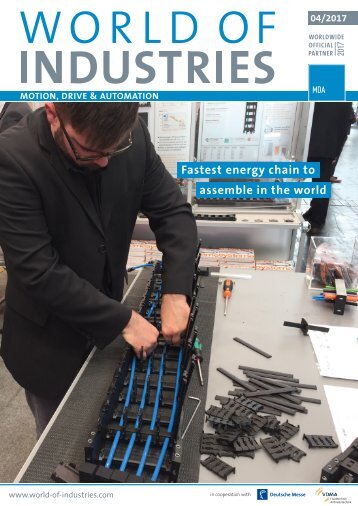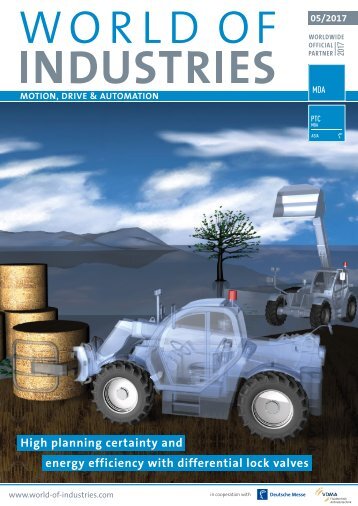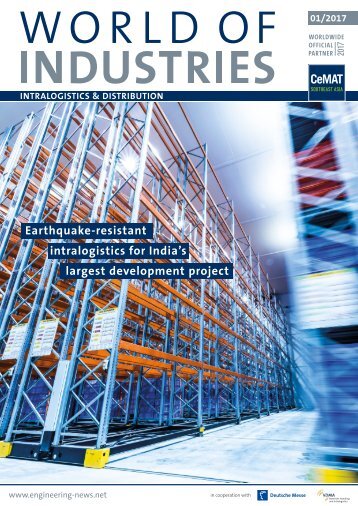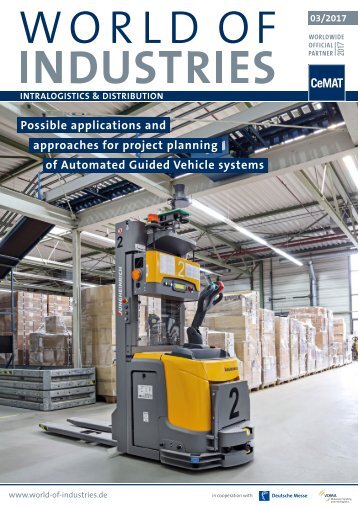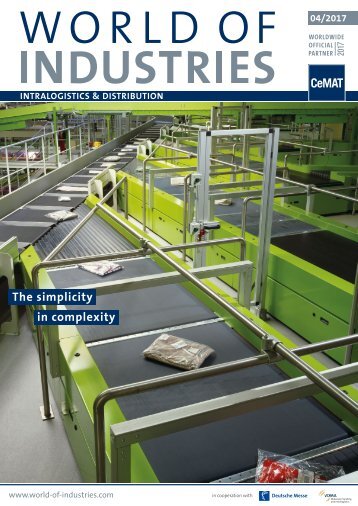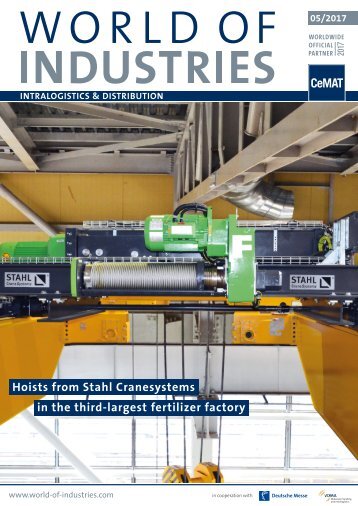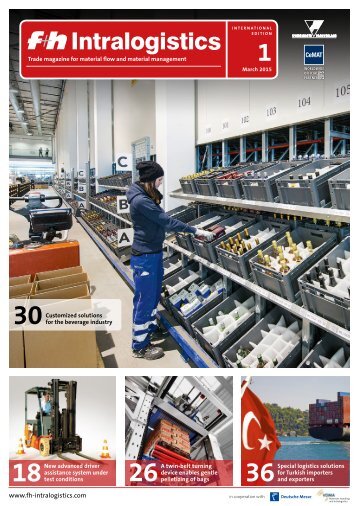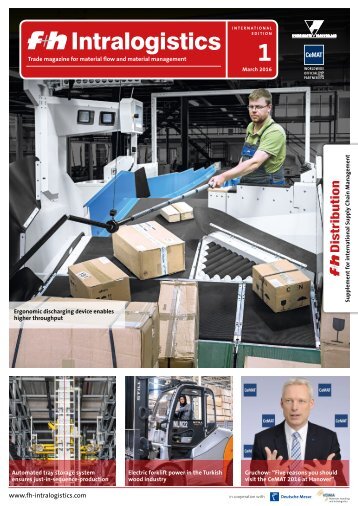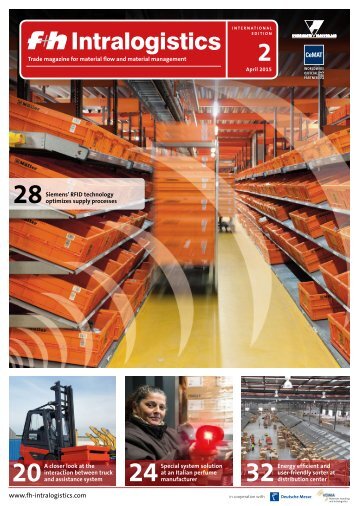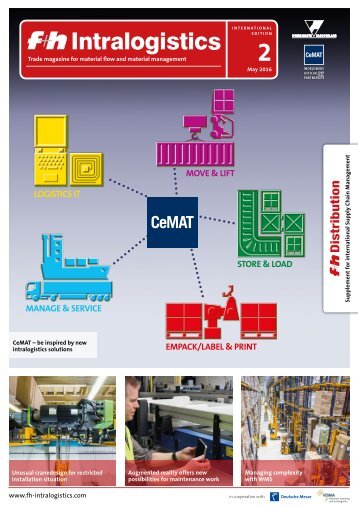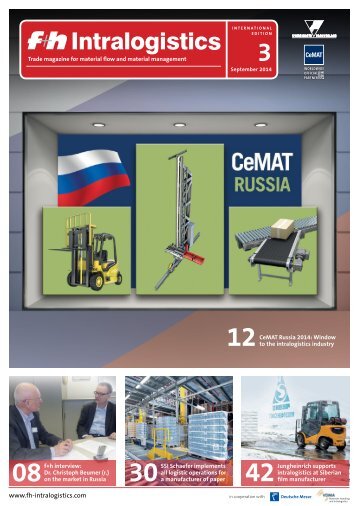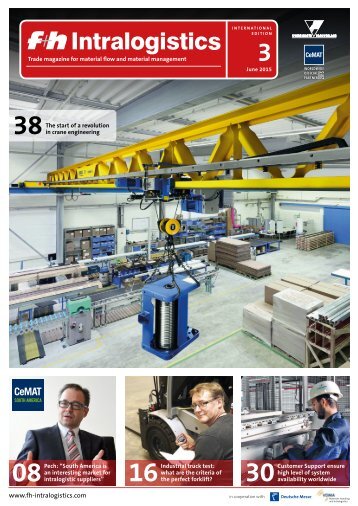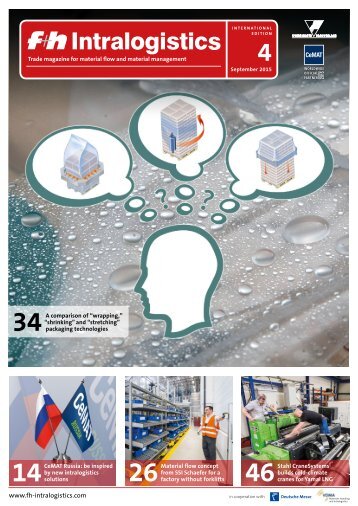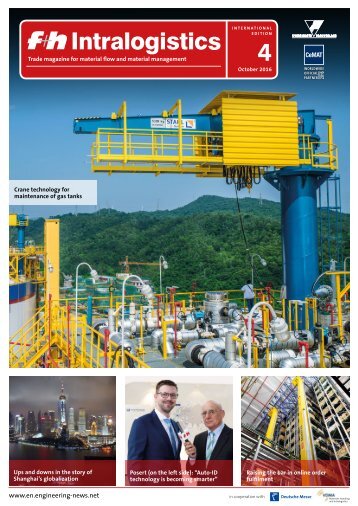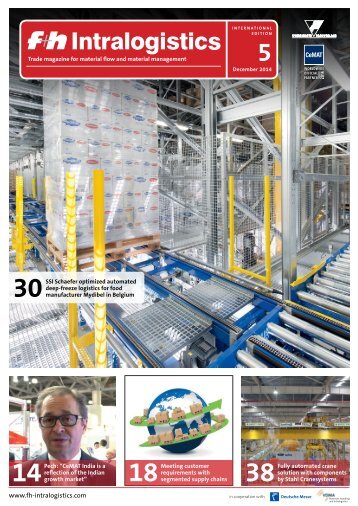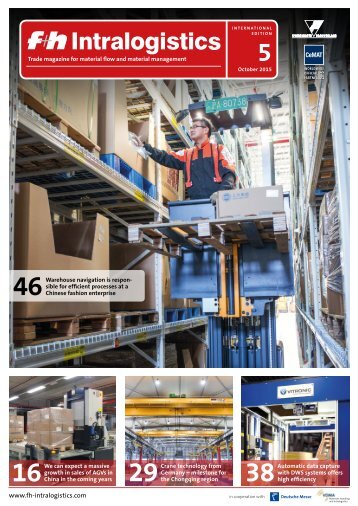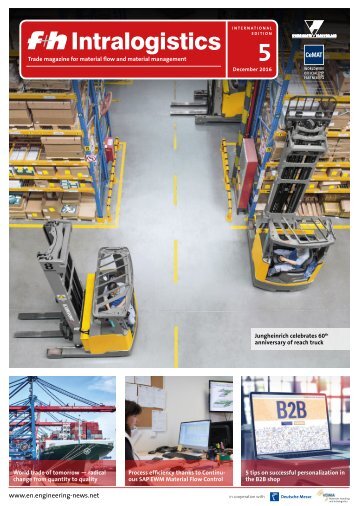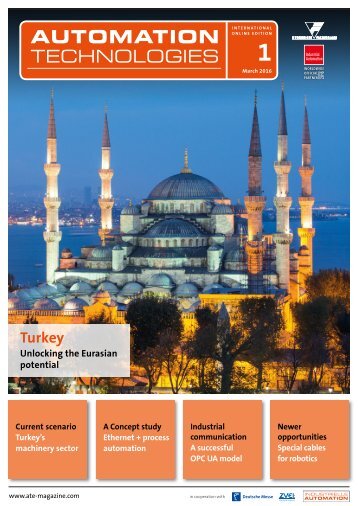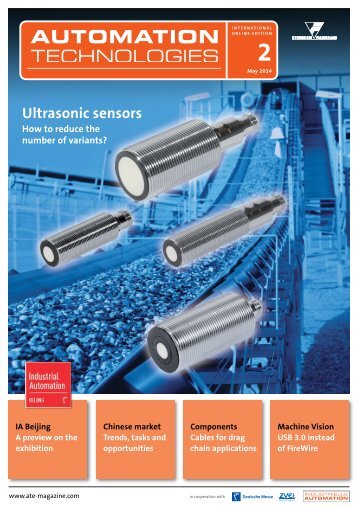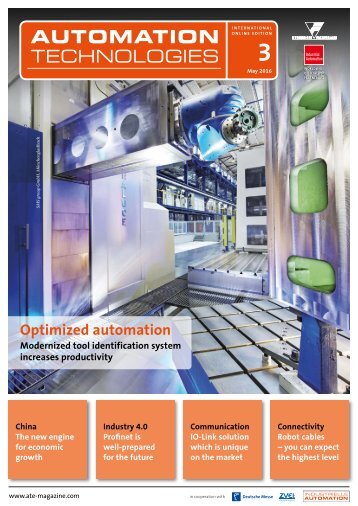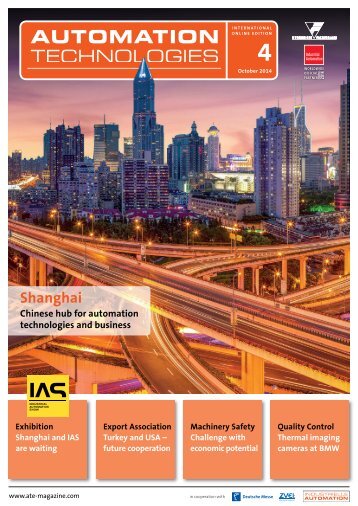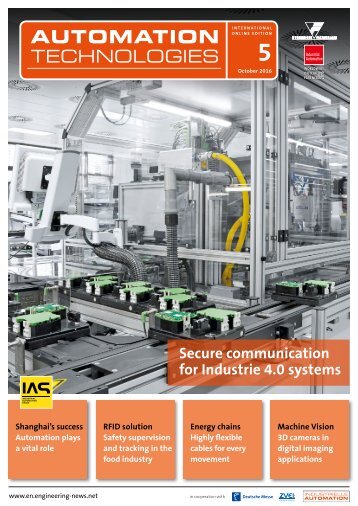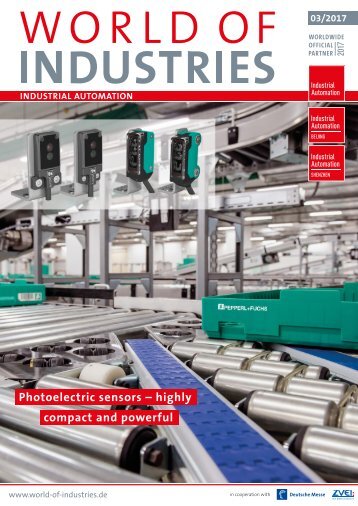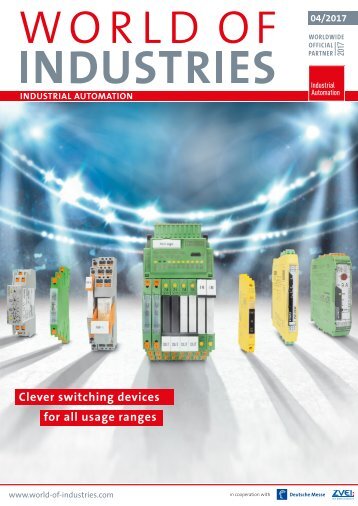Automation Technologies 4/2016
- Text
- Automation
- Technologies
Author: Dipl.-Ing. (FH)
Author: Dipl.-Ing. (FH) Holger Unger, Product Manager photoelectric sensors, Pepperl+Fuchs, Mannheim, Germany Photoelectric sensors are ahead of the competition SENSORS AND MEASUREMENT Holger Unger The new series of photoelectric sensors offers many benefits of a future-oriented product architecture. All key detection and measuring functions, as well as IO-Link and other features, are integrated in a compact housing. The sensors features an M18 thread on the front, a form of fixture that is predestined for the North America market. As the new generation of standard photoelectric sensors, the R100, R101, and now R103 series provided by Pepperl+Fuchs, meet current requirements in the automation market in compact style. Each series of sensor is equipped with IO-Link as standard, as well as the new DuraBeam laser technology as an option, highlighting the sensors’ capacity to cover the full range of highly specific mounting situations. Thru-beam sensors, retroreflective sensors with polarization filter, foreground or background suppression or for detecting transparent objects, energetic diffuse mode sensors including those with background suppression, as well as light barriers with a measurement core and distance sensors - all of these sensor principles are integrated in an identical housing for each series. The benefit of this setup is that once the mounting situation has been determined, the user is free to choose the required functional principle - light barrier or light sensor, either switching or measuring - depending on the task at hand. This product philosophy is shown in a multitude of diverse new applications. Advantages for users and manufacturer Companies supplying equipment to intralogistics and package sorting facilities also make use of these sensors, as well as manufacturers of packaging machines and automotive suppliers. Positive are features such as the high level of robustness, ease of alignment using the bright emitter light, extremely high switching accuracy at low hysteresis, stability in bright conditions and when faced with extraneous light, the availability of measuring versions of sensors in the same series housing, and, last but not least, cost-effectiveness and future security thanks to IO-Link. Optimized detection performance, energy efficiency and increased service life Just like the R100 and R101, the R103 sees a host of innovative technologies come together in intelligent form. One new feature is the DuraBeam laser technology, which combines the benefits of LED emitters - including a long service life and suitability for use in an extended or increased temperature range - with the advantages of conventional laser diodes, which include a large operating distance and a contoured, bright light spot shown on the object. Users benefit from features such as optimized detection performance, in other words increased operating distances and functional reserves, as well as reproducible switching characteristics, improved energy efficiency, and an increased service life from the sensors. AUTOMATION TECHNOLOGIES 4/2016
01 All functional principles for identical mounting situations open up new scope for design 02 The new generation of standard photoelectric sensor in a compact design is ready for Industry 4.0 The R103 even tackles specific challenges with a high level of reliability: As the special profile of the eye-safe DuraBeam laser always projects a sharply contoured light spot onto an object, the light barriers and distance sensors in this series are also ideal for tackling highly precise detection tasks, as well as for accurately measuring the distance to small objects. Sensing by ranging Another innovation from Pepperl+Fuchs, Multi Pixel Technology (MPT), comes into its own in close-range applications in particular. Based on the idea of “sensing by ranging”, this approach offers a considerably higher level of detection reliability and process reliability than conventional energetic detection principles. MPT is based on high-precision, geometric triangulation. The bright LED or laser light source in the sensor generates a light spot with a high energy density on the object and thus a reflection that is mapped on the receiving multipixel array with maximum precision. Intelligent software algorithms use the position of the center of the reflection on the array to calculate the exact distance between the sensor and the object. At the same time, interference from the environment - in the form of brightness, extraneous light, reflections, or electromagnetic influences - is hidden or metrologically suppressed. Mounting concept commonly used in North America The design of the sensor draws on a mounting concept that is commonly used in North America in particular and the logistics facilities located in that region. Using the M18 “nose” thread located on the front, the sensor is secured directly through a perforated plate or the side panel of a material handling module. To enable the devices to be integrated into the electrics, all sensors from the R103 series are optionally available with an M8 plug-in connector, M8 or M12 pigtail, and a cable outlet. The R103 is as easy to operate and visualize as it is to mount. The device is based on a combination of operating elements and offers the same look and feel for all series of the R10x product architecture and all sensor types. The operator uses a push button to select the switching type and teach in the switch point. Sensitivity, switching threshold, and operating mode can all be set using the multiturn potentiometer. The display concept is also proven: Two LEDs highlight that the sensors are ready for operation, indicate the switching type, show the free light path for detection or distance measurement, and also signal if the functional reserve has been reached or the light beam has been interrupted. This usability simplifies the process to parameterize the sensor, saves time and costs during commissioning, and ensures reliable and safe operation of the sensors. Sensorik 4.0 for Industry 4.0 The various series of the future-oriented product architecture expand the range of Sensorik 4.0 products offered by Pepperl+Fuchs. What’s more, with the R103, all sensor variants are equipped with IO-Link as standard. This functionality enables the devices to be parameterized directly and allows data to be queried by automation systems in a machine or the top fieldbus levels of plants. This setup ensures the sensors are ready for Industry 4.0 and the digitalized Smart Factory. If necessary, the devices can also be addressed wirelessly via smartphone or tablet PC—using SmartBridge® technology from Pepperl+Fuchs. This functionality can be used firstly to simplify the parameterization of individual sensors or sensors with the same design and function, and secondly to gather functional and status data externally in the cloud during operation, in parallel with wired data transfer to the controller. This data can then be used to carry out predictive maintenance, for example. Photographs: teaser fotolia, 01-02 Pepperl+Fuchs www.pepperl-fuchs.com About Pepperl+Fuchs Pepperl+Fuchs is a worldwide company with its headquarters in Mannheim, Germany. They manufacture products for Factory and Process Automation and are specialists in sensor manufacturing. With revenues more than € 500 million and nearly 5,600 employees worldwide, the company has more than 40 foreign subsidiaries on six continents, and manufacturing facilities in Germany, USA, Singapore, Hungary, China, Indonesia and Vietnam. AUTOMATION TECHNOLOGIES 4/2016
- Page 1 and 2: INTERNATIONAL ONLINE EDITION 4 Augu
- Page 3 and 4: EDITORIAL It’s real, it’s futur
- Page 5 and 6: News and Markets Igus increases sal
- Page 7 and 8: Pruftechnik reinforces footprint in
- Page 9 and 10: decline in 2016 and then rise in 20
- Page 11 and 12: motion systems, Gears, Electric mot
- Page 13: f+h Intralogistics 3/2015 13
- Page 17 and 18: Ultrasonic through-beam sensors - i
- Page 19 and 20: Ease of use and simple programming
- Page 21 and 22: (properties) or congruent (properti
- Page 23 and 24: Overcoming IoT complexity Ray Almgr
- Page 25 and 26: includes a Tray Cable-Exposed Run T
- Page 27 and 28: Updating effort minimised With a fu
- Page 29 and 30: global quality statement about inco
- Page 31 and 32: conversion into an image results in
- Page 33 and 34: Visions for the future Whether on l
- Page 35: Weld-immune IO-Link designed for ex
Inappropriate
Loading...
Mail this publication
Loading...
Embed
Loading...

